RECIPES FROM SPANISH SPEAKING COUNTRIES
RECIPES FROM SPANISH SPEAKING COUNTRIES

These recipes are from Spanish speaking countries. You will note a high number of recipes from Mexico. This is because my parents were both born in Mexico: Hidalgo and Mexico City. Although I listed the country of origin for each recipe, keep in mind that the recipe is not always exclusive to that country. Many countries are influenced by their bordering countries. Some recipes are not what most children would find delicious, but they do give them an opportunity to taste a bit of the culture of other Spanish speaking countries.
ARROZ (rice)
Country of origin: Ecuador
1 cup of rice
1 1/2 cup of water
1/4 tsp. salt
1 tsp oil
Combine and cook at medium heat until it boils, cover and cook on low heat until ready. (20 min approx) You may want to eat Cocolón also. That is the hard rice that forms in the bottom of the pot when you add more oil and it’s considered a delicacy in Ecuador. Don’t mistake it with burned rice. Cocolón is of a light yellow – cream color, not black,
ARROZ CON CHILES VERDE (Rice with green chiles)
Country of origin: Uruguay
1 Tablespoon oil
2 Cups rice
1/2 onion, diced
1 teaspoon salt
1 teaspoon oregano
1 small can diced green chiles
4 cups water
1 pint sour cream
Saute dry rice in saucepan with oil until slightly browned. Stir in onion and spices and stir over medium heat for 3 minutes. Add diced green chilies and water. Cover and simmer for about 20 minutes or just until the water is absorbed. Serve with sour cream.
ARROZ CON POLLO (chicken and rice)
country of origin: Guatemala

4 pieces of chicken, cooked, skinned, de-boned
1 Tablespoon oil
2 Cups rice
1 onion, diced
2 tomatoes, diced
1 clove garlic, ,pressed
1 teaspoon salt
1 teaspoon chili powder
1/2 teaspoon black pepper
4 cups water
1 avocado
Cook chicken by whatever method you prefer, remove skin and bones. Set aside. Brown dry rice in saucepan with oil. Stir in onion, tomatoes, and spices.
Place chicken on top of rice and add water. Cover and simmer for about 20 minutes or just until the water is absorbed. Serve with cold slices of avocado.
ARROZ CON POLLO Chicken and rice
country of origin: Costa Rica
from the kitchen of Connie Bazzarre, one of my co-workers at Stellar Charter School
2 chicken breasts
4 cups water
4 cups of chicken broth
1 teaspoon Badia-sazon Complete Seasoning
3 Tablespoons butter
4 strips of bacon cut into pieces
1 diced onion
cilantro, minced, (to taste)
1 stalk celery. diced
1 sweet red pepper cut into strips
1/2 teaspoon garlic
1 can of mushrooms
1/2 cup raisins
1 can of mixed veggies (medium)
1 can petit pois peas (medium)
3 1/2 cups parboiled rice
Simmer the skinned chicken breasts in 4 cups of water and chicken broth. Add a teaspoon of Badia-sazon Complete Seasoning. Take out the breasts when cooked and continue to simmer the broth. Shred or cut the breast, reserve. Strain broth when done.
In skillet saute garlic, onion, cilantro, peppers, celery, and raw bacon in butter. Fry well. Add the rice. Brown and stir 5 minutes. Add the chicken and raisins, cans of veggies and the 4 cups of simmered broth. Cover and cook until well done and broth is evaporated. Add water if it starts to dry out too son. Serves 7
ARROZ DE CUMINO (cumin rice)
Country of origin: Mexico

1/2 lb. ground beef
1 Tablespoon oil
2 Cups rice
1/2 onion, diced
1 clove garlic, ,pressed
1 teaspoon cumin
1 teaspoon salt
1 teaspoon chili powder
4 cups water
Brown ground beef. Set aside. Saute dry rice in saucepan with oil until slightly browned. Stir in onion and spices and stir over medium heat for 3 minutes. Add beef and water. Cover and simmer for about 20 minutes or just until the water is absorbed.
ARROZ TICO
Country of origin: Costa Rica

Garlic, to taste, finely sliced or diced
2 tablespoons butter
1 onion, finely sliced
2 Cups hot water
1 lb. chorizo sausage
3 carrots, sliced
2 red peppers, cut into strips
2 tomatoes, skinned and chopped
1/2 head of cabbage, shredded
Sauté rice, garlic and half of the onion in 2 tablespoons of
the butter over medium heat. Add water
and reduce heat to low. Cover and allow to cook until the rice has absorbed the
water – about 15 minutes. Meanwhile cook the chorizo with the remaining onion.
Add vegetables and cook through. Mix with rice. Serve with baked marinaded chicken. (recipe follows)
CHICKEN MARINADE:
1/2 tsp grated lime peel
1/3 c lime juice
1/4 c tomato juice
1 Tlb Chopped fresh cilantro Or parsley
2 tsp vegetable oil
1/4 tsp salt
1/8 tsp red pepper sauce
2 Cloves garlic, minced
Mix all ingredients in shallow nonmetal dish or resealable plastic bag. Add up to 3 pounds Chicken, Pork or Beef, turning to coat with marinade. Cover dish or seal bag and refrigerate, turning meat occasionally, at least 8 hours but no longer than 24 hours. Remove meat from marinade; discard marinade.
ATOLE (hot cornmeal drink)
country of orgin: Mexico

Atòle is a sweet, thick, hot, milk drink that is served in Mexico, much like we serve hot cocoa. It is prepared with corn flour, or corn starch, not cornmeal. Corn flour is sold by Quaker Co. as “masa harina”. Azteca Co. sells it as “Maseca, corn masa mix.” It is used to make tortillas, tamales, etc. Mexican flavored corn starch is sold as Maisena.
1/2 cup milk
1/2 cup water
1/8 cup cornstarch
1/8 cup tortilla flour mix
1 1/2 cup milk
1/3 cup sugar
1/2 teaspoon salt
1/2 teaspoon vanilla
cinnamon
In cold saucepan stir together half of the milk, water, cornstarch, flour. Cook and stir over low heat until thickened and bubbly. Blend in remaining milk, sugar, salt and vanilla, heating through. More corn flour can be added if it becomes too thin. Sprinkle with cinnamon before serving. Serve hot. A similar drink called “Champurrado” is made the same way, adding chocolate flavoring, or fresh fruit. The fruit would be peeled, sliced and pureed in blender.
BISCOCHOS (biscuits)
country of origin: Mexico

3 Cups flour
4 1/2 teaspoons baking powder
2 Tablespoons sugar
1/2 teaspoons salt
1/2 teaspoons cream of tartar
1/2 Cups butter
1 egg
1 Cup milk
1 extra egg, beaten
In a bowl combine flour, baking powder, sugar salt and cream of tartar. Cut in butter until mixture resembles coarse cornmeal. In separate bowl beat egg and milk thoroughly. Keeping the dry & wet ingredients up to this point is important. Make a well in the middle of the flour, pour in milk-egg mixture, stirring quickly and briefly. Knead lightly on floured board. Add as little flour as possible. Roll or pat gently to 1 inch thickness. Cut into 1-2 inch biscuits using a biscuit cutter or a glass dipped in flour. Separate on a cookie sheet. Using a pastry brush, brush biscuits with beaten egg. This will create a shiny finish to the bread. Bake for 12-15 minutes at 350 – 275 depending on your oven.
BOLON DE VERDE (Plantain and Cheese biscuit)
from Tobias Idrovo
country of origin: Ecuador

4 green plantains, peeled
1/4 cup grated cheese
3 tablespoons melted butter
¼ teaspoon salt
Cut peeled and dried plantains into 1-inch rounds. Heat a skillet with oil. Fry the plantains until both bottoms are golden yellow ( a little brown, but not too much.) Remove the fried plantains and place in a metal pot. Immediately after, mash plantains with something heavy (the bottom of a bottle works well). Add butter until the plantains form a dough. Knead cheese into the plantain dough. Form into tennis-sized balls. Serve immediately. This is a typical dish from Ecuador, some options are to also add bacon and diced onion. They are served hot with a fried egg, or a steak (beef or liver), and coffee. (Cheese should be fresh and the kind that melts). Mash everything well, form balls and fry until they are golden.
BOQUITAS DE FRIJOLES (bean appetizers)
country of origin: Peru
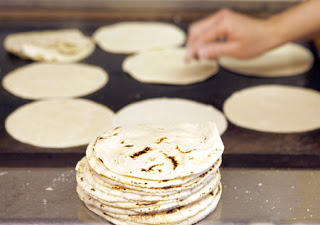
4 Cups black beans
1 Tablespoon salt
4 Cups masa harina flour (flour for making tortillas or tamales)
1/2 cup shortening or margarine
1/2 teaspoon salt
3 cups water
1 head of lettuce
1/2 head of cabbage
1/2 pound of cheese
radishes, sliced as thin as possible
sour cream
Inspect beans, removing any rocks or foreign materials. Wash beans thoroughly by placing beans in a colander in the sink and running water over it while washing the beans by hand, rinsing through several times, making sure they are completely clean. Soak beans in tall stockpot overnight with baking soda.(It is said that the soda removes some of the gas.) Make sure water covers beans allowing them to still be covered with water after doubling in size during soaking process. In the morning, drain into colander and rinse thoroughly. Pour beans into pot. Add salt, and cover with water. Bring to a boil and simmer until soft, 1 or 2 hours. Traditionally, beans are mashed and fried in lard, but I don’t fry them. Using a slotted metal spoon to move beans into a medium hot saucepan, a few spoonfuls at a time, mash with the slotted spoon and add bean broth so the beans do not dry out. Continue until all beans are added. Use the broth to get the right consistency. You may not use all the broth, but save the broth for re-heating any leftover beans.
Prepare tortillas:
Cut shortening into masa harina flour until it resembles cornmeal. Stir in salt. Add water 1/8 cup at a time or less to masa until it forms a dry dough. If it is too moist, it will stick and not make tortillas.
Roll into 1-inch balls, flatten by pressing between hands or using a tortilla press. Cook in a skillet using medium high heat. Turn over once to cook opposite side.
Note: various brands of tortilla flour can be found in the Mexican food section of your grocery store.
While tortillas are still warm, squeeze the edges with your fingertips, this should form a rim around the tortillas with a flat center.
Combine lettuce and cabbage after shredding very finely. Grate cheese.
Spread beans in tortilla and sprinkle with cheese. Place on cookie sheet and bake until cheese melts. Garnish with lettuce mixture and radishes. Serve warm with a dab of sour cream. (Note: In Mexico these are known as sopes.)
CALDO DE POLLO Y REPOLLO (Chicken and Cabbage Broth)
country of origin: Mexico
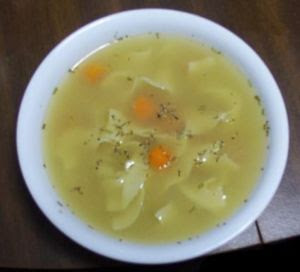
2 Tablespoons butter or margarine
2 stalks of celery, diced
1/2 onion, diced
1 clove garlic, minced
2 large pieces of chicken, boned & diced
1/2 teaspoon cumin
1/2 head of cabbage, shredded
10 radishes, sliced
2 teaspoons salt
6 cups of water
Saute celery, onion with butter and garlic in saucepan for a few minutes. Add diced chicken and cumin and saute until chicken is browned. Cover with cabbage and radishes. Sprinkle with salt and pour in water. Bring to a boil and simmer until vegetables are slightly tender.
CARBONADA CRIOLLA (Beef Stew with Vegetables and Fruit)
Country of origin: Argentina
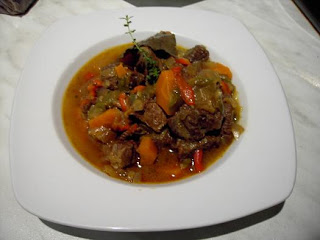
3 Tablespoons olive oil
2 pounds of stewing beef, cut into 1-inch chunks
4 large tomatoes, chopped thick
1 green pepper, chopped thick
1 large onion
3 cloves garlic, minced
2 bay leaves
1 teaspoon oregano
2 cups canned chicken stock
3 potatoes, diced into 1-inch cubes
3 sweet potatoes, diced into 1-inch cubes
2 ears of corn, cut into 1-inch widths (or use 2 cups of frozen corn)
2 zucchini, diced into ½-inch pieces
2 peaches in ½-inch pieces
2 pears in ½-inch pieces
Procedure
Heat oil in heavy pot.
Brown beef in separate batches so that all of it gets cooked. Remove from the pot and set aside.
In that same pot, cook tomatoes, pepper, onion, and garlic until soft.
Add bay leaves, oregano, and chicken stock, and bring to a boil.
Return beef to the pot, and add potatoes and sweet potatoes. Cover and simmer 15 minutes.
Stir in zucchini and corn. Simmer 10 more minutes, or until vegetables are almost soft, then add the peaches and pears.
Cook 5 more minutes.
Serve hot.
Makes 6 to 8 servings.
CARBONADA (Beef Stew)
Country of origin: Chile
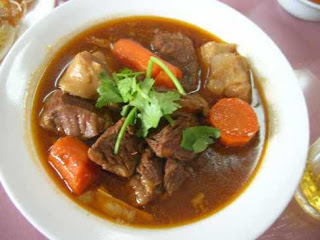
2 pounds of stewing beef, cut into 1-inch chunks
4 large tomatoes
1 green pepper
1 large onion
3 cloves garlic, minced
2 bay leaves
1 teaspoon oregano
2 cups beef stock
3 potatoes
2 zucchini
2 carrots
half head of broccoli
Brown beef well, then sprinkle in garlic, bay leaves, oregano, Pour in beef stock. Add finely chopped vegetables. Cook until vegetables are soft and flavors combine. Cover and simmer 30 minutes or more. May simmer longer until ready to serve. Serve hot. Makes 6 to 8 servings.
CEVICHE (Citrus marinaded fish)
country of origin: Costa Rica
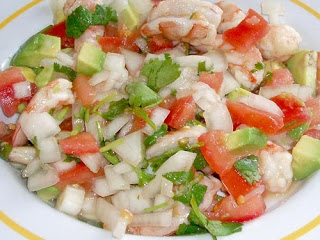
1 lb (450 gr) firm white fish
1 small Onion
1 clove garlic
4 or 5 sprigs of cilantro (coriander leaf)
1 small (¾”, 2 cm) hot chili
about 8 limes (enough for at least ¾ cup of juice)
¼ teaspoon salt,
and pepper to taste
Cut fish into ½” (1 cm) cubes. Mince the Onion, garlic, and chili coarsely. Chop the cilantro very finely. Juice the limes and strain to remove the pulp and seeds. Shrimp (or for the very daring, clams) can be substituted for the fish. Mix all of the ingredients and refrigerate tightly covered for at least 3 hours. Serve with corn tortillas, tortilla chips, or crackers.
CHILAQUILES (tortilla omelet)
country of origin: Mexico
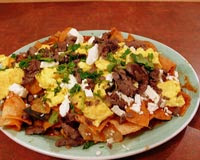
6 tortillas
1 medium onion
salt and pepper to taste
2 diced tomatoes
2 Tablespoons salsa
12 eggs
1/2 cup cheddar cheese
1/2 cup sour cream
Cut or rip tortillas into small pieces into hot greased skillet. Move tortillas in skillet to prevent burning. Add diced onion and spices and cook for a few minutes. Stir in tomatoes and salsa. Crack eggs into mixture, stirring occasionally. Cover with cheddar cheese. Serve when cheese melts. Top with a small spoonful of sour cream and additional salsa if desired.
CHILE RELLENOS
Country of origin: Mexico
3 eggs, separated
1/4 teaspoon salt
1/2 teaspoon cream of tartar
1 16 oz can green chilies (Ortega)
1 lb Monterey Jack
or Oaxaca cheese or your favorite
1 Cup cornmeal or flour
fat for frying
Separate eggs. Beat egg whites until foamy, Add cream of tartar and salt. Continue beating until white and stiff. Carefully and slowly (so the whites don’t fall) stir in egg yolks into egg whites. Heat fat in saucepan to medium high heat for frying. Slice cheese into 1 inch, thin slices so they fit inside the chile without tearing the chiles. Stuff chili with cheese. Sprinkle flour or cornmeal on a plate, roll stuffed chilies in flour or cornmeal. Dip into egg white mixture, all in one motion so that the chile is completely covered. Carefully lay in hot fat; fry until slightly brown, carefully turn over only once to complete cooking. Serve hot with tomato sauce.
CHIMICHURRI (Dipping and marinate Sauce)
country of origin: Argentina
1/2 cup olive oil
2 Tablespoons lemon juice
1/3 cup fresh parsley, minced
1 clove garlic
2 shallots (or 2 small onions), minced
1 teaspoon minced basil, thyme, or oregano (or mixture of these, if preferred)
Salt and pepper to taste
Procedure
Combine all ingredients in a bowl and let sit for at least 2 hours before serving as a dip for empanadas or to marinate; baste meat for BBQ.
CORNBREAD (pan de maiz)
1 1/2 cup cornmeal
1 cup flour
1/4 cup sugar
2 1/2 teaspoon baking powder
3/4 teaspoon salt
2 eggs
1 cup milk
1/4 cup oil
Sift together dry ingredients. In separate bowl beat eggs, milk and oil. Slowly and carefully stir wet into dry ingredients, just enough to moisten. Too much mixing will not allow the bread to rise, or will fall during baking. Pour into greased 8 x 8 inch pan or 12 greased muffin tins. Bake at 375 degrees for 25 minutes. Makes 6 servings. Optional: sprinkle with cinnamon sugar before baking.
COCONUT CREAM CHEESE BALLS
Country of origin: Panama
1 can of coconut flakes
1 package of cream cheese
Shape softened cream cheese into “small” balls and roll them in coconut flakes. Serve chilled.
CREPES
country of origin: Spain, influenced by France

Basic crepe recipe
4 eggs
1 1/3 cups milk
1/4 cup melted butter
1 teaspoon salt
1 cup sifted flour
1 Tablespoon sugar (optional)
Beat eggs, milk, melted butter, salt (sugar) and flour until smooth.
Heat an 8-inch skillet, brush with butter or spray with cooking spray.
Add ¼ cup batter, tilt pan to spread evenly. Cook over moderately low
heat until bubbles rise and crepe is brown and edge curls. Turn with a spatula and cook about 30 to 60 seconds more. Actually this second
side will not brown like the first die, but rather “freckle.” Repeat procedure with remaining batter, stacking crepes on a plate. Cover with wax paper to keep warm. For a large amount, stack 6 high then
place a sheet of wax paper for easy counting of crepes. The first crepe is sort of trail run to test the consistency of the batter, the pan, and the heat.
CUCHUCO (wheat soup)
country of origin: Uruguay
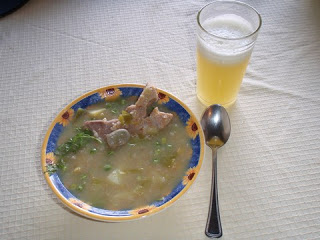
1 pound beef (ground or stewing)
1 large beef bone
2 1/2 quarts water
1 onion
1 clove garlic, minced
1/2 cup whole wheat (soaked in hot water overnight)
2 Tablespoons salt
2 potatoes peeled and cubed
1 cup fresh or frozen peas
Combine the beef, bone, water, onion, and garlic in a deep saucepan. Bring to a boil and skim the top carefully. Cook over medium heat for 1 hour. Add the whole wheat stirring constantly. Cook over low heat for 30 minutes longer. Add the salt, potatoes, and peas. Cook for 20 minutes or until the potatoes are tender. The meat should be cut into small pieces and served in the soup.
Note: Whole wheat can be soaked the previous night with hot water in a thermas or a crock pot. Cover with 3 times the amount of water as the wheat. Keep in mind that it will swell substantially, so leave room for that in whatever container in which you decide to soak it. Whole wheat can then be kept in the refrigerator in a plastic container and eaten as a warm cereal adding fruit, raisins, honey or sugar. It can also be add to soups, stews, salads, or other dishes. Some enjoy a spoon full in yogurt. Wheat picks up the flavor of other foods.
EJOTES EN HUEVO (green beans in egg)
country of origin: ECUADOR
1 can green beans
3 eggs, separated
salt (to taste)
fat for frying
Drain green beans. Separate eggs. Beat egg whites with salt until light and fluffy. Heat fat in saucepan to medium high heat for frying. Carefully and slowly (so the whites do not fall) stir in egg yolks into egg whites. Take about 3 string beans and dip into egg white mixture. It should stick to beans. Place in hot fat and fry until slightly brown, turn over once to complete cooking. Serve hot. Note: This same method is used to make Chile Rellenos (stuffed green chilies). Simply stuff chili with cheese, roll in flour or cornmeal, dip in egg white mixture, and fry. Top with tomato sauce.
EMPANADAS (Little Meat Pies)
Country of origin: Argentina
FILLING:
1 pound ground beef
½ cup onions, chopped
8 green olives, chopped
1 teaspoon salt
¼ teaspoon oregano
PASTRY:
1 ¼ cup flour
¼ cup ice water
FILLING:
Brown the ground beef and onions in a frying pan until meat has lost all its pink color.
Stir in the remaining ingredients.
Drain the mixture well, and allow it to cool.
To prepare the pastry, stir together flour and salt. Cut in the butter until mixture resembles coarse meal. Slowly stir in ice water until it can be kneaded and rolled out. May not need all the water. Divide the dough in half, refrigerate the remaining half while you roll out the dough, very thin. Cut rounds using a biscuit cutter or a drinking glass. Lay aside dough remnants. Roll out and cut the refrigerated dough, setting aside the remnants from cutting dough. (The only reason you lay the remnants aside is to avoid add as much flour to the dough by repeatedly rolling out and re-rolling out the same piece of dough.) Gather the remnants, knead and roll out again, cutting more rounds. Place half the rounds on a cookie sheet. Place about 1/4 cup of meat filling in the center of each round. Pick up each round of dough, quickly moisten the dough and place over the meat filled round. Lightly press to seal, press edges lightly with a fork all the way around to close. Bake at 350 degrees 10-15 minutes until brown.
Serve hot with chimichurri. (see recipe)
EMPANADAS (Chicken Pot Pie Turnovers)
Country of origin: Argentina
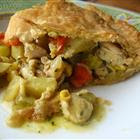
2 tablespoons olive oil
1 medium yellow onion, diced
2 cloves garlic, minced
1/4 teaspoon red pepper flakes
1 cup shredded carrots
1 cup frozen peas
1 1/2 cups chopped cooked chicken (from rotisserie chicken)
1/2 cup prepared chicken or turkey gravy
1/2 cup shredded cheddar cheese
Salt and freshly ground black pepper, to taste
1 ¼ cup flour
¼ cup ice water
Preheat oven to 400 degrees.
Heat the oil in a large skillet over medium-high. Add the onion, garlic and pepper flakes. Saute until just tender, about 4 minutes. Add the carrots and peas and saute another 4 to 5 minutes, or until the peas are thawed.
Add the chicken and saute until just heated through, about 3 minutes. Add the gravy and bring to a simmer. Add the cheese and stir until melted. Season with salt and pepper.
To prepare the pastry, stir together flour and salt. Cut in the butter until mixture resembles coarse meal. Slowly stir in ice water until it can be kneaded and rolled out. May not need all the water. Divide the dough in half, refrigerate the remaining half while you roll out the dough, very thin. Cut rounds using a biscuit cutter or a drinking glass. Lay aside dough remnants. Roll out and cut the refrigerated dough, setting aside the remnants from cutting dough. (The only reason you lay the remnants aside is to avoid add as much flour to the dough by repeatedly rolling out and re-rolling out the same piece of dough.) Gather the remnants, knead and roll out again, cutting more rounds. Place half the rounds on a cookie sheet. Place about 1/4 cup of meat filling in the center of each round. Pick up each round of dough, quickly moisten the dough and place over the meat filled round. Lightly press to seal, press edges lightly with a fork all the way around to close. Bake at 350 degrees 10-15 minutes until brown.
ENCHILADAS DE POLLO O RES (chicken or beef enchiladas)
country of origin: Mexico
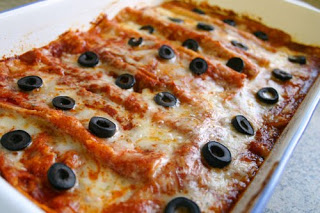
3 lbs chicken
1/2 onion
16 oz tomato sauce
1 tsp garlic powder
1 tsp chili powder
1/2 tsp. salt
dash cayenne pepper
1 lb Monterey Jack cheese
1 lb cheddar cheese
Boil chicken at a high boil for 30 minutes. Skin, bone, and shred with fork. If using beef, brown ground beef, drain fat. Combine meat with onion. Heat tomato sauce and spices. Grate and combine cheeses. Heat tortilla, (or it will tear and not roll correctly) fill with 2 tablespoon filling and some cheese. If too much filling is used, they don’t stay rolled. Roll and place in 9×13 casserole. Pour tomato sauce on top and additional cheese. Garnish with black olives. Bake for 30 min, at 350 covered with foil.
ENSALADA DE FRUTA Y YOGURT (Frozen Yogurt Fruit Salad)
Country of origin: Argentina
3 Tablespoons honey
3 Tablespoons lemon juice
1 medium apple, cored and chopped
1 medium plum, pitted and sliced
1 large orange, peeled and sliced into ¼-inch rounds
1 large grapefruit, peeled and sectioned
1 medium banana, peeled and sliced into rounds
1 quart frozen vanilla yogurt
In a large bowl, whisk together the honey and lemon juice. Stir in the fruit, and serve topped with a scoop of frozen yogurt. On Christmas Eve, celebrated on December 24, Argentines eat a late meal of cold beef, chicken, or turkey, and fruit salad. Because Christmas occurs during summertime in South America, Argentines often eat the meal outside on decorated tables. After dinner, they eat almonds, dried fruits, and pan dulce, a sweet bread that is similar to fruitcake but has fewer fruits and nuts.
ENSALADA DE NOCHEBUENA (Christmas Eve Salad)
Country of origin: Mexico
1 can beets
2 pomegranates
1 red apple
2 bananas
2 tablespoons lime juice
1 head romaine lettuce
1 small jícama
2 oranges
1/2 cup chopped peanuts
1/2 cup orange juice
Drain and rinse beets in cold water. Cut the tops off the pomegranates and cut fruit into quarters. Place in a bowl of cold water and separate seeds from the membranes. Drain seeds and pat dry. Dip the thinly sliced apple and banana in the lime juice to prevent discoloration. Do not peel apple. Line a shallow salad bowl with six lettuce leaves. Shred the remaining lettuce and place on top of the leaves. Arrange the beet slices, peeled and sliced jícama, orange sections, apples and bananas in a decorative pattern over the lettuce. Sprinkle with the peanuts and top with the pomegranate seeds. Just before serving, drizzle orange juice over the salad
ENSALADA DE NOPALITOS (Cactus Salad)
from the kitchen of Nicole Burris
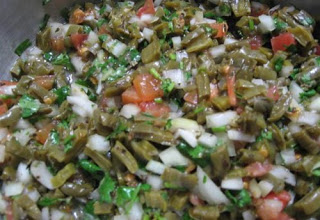
1 jar nopalitos (cactus)
3 tomatoes
1 onion
cilantro
Cotija cheese
Drain, rinse, and dice nopalitos. Dice tomatoes, onion and cilantro. Mix together. Crumble cheese and add to nopalitos mix. Salt to taste. Serve with chips.
ENSALADA RUSA (Russian Salad)
country of origin: Argentina
2 cups boiled potatoes, diced
1/2 cup cooked peas
1/2 cup cooked carrots, diced
Mayonnaise
Salt to taste if needed
Variations: 1 can tuna, 4 hard boiled eggs,
garnish with Spanish olives
Cook the potatoes however you like but I prefer to keep them whole with the skins on while boiling. Then when cooled, peel and dice them. In a large bowl, add potatoes, carrots, and peas. Gently fold in mayonnaise spoonful by spoonful, so as not to break up the potatoes, until the vegetables are lightly coated or whatever consistency you prefer. Don’t go overboard since some cringe when they see too much mayonnaise. You can always place extra mayonnaise on the table at serving time for those who like their salads heavy. This basic recipe has variations with additional ingredients, according to family traditions and tastes, just as you might have Grandma’s original recipe for potato salad.
ENSALADA TROPICAL (fruit salad)
Country of origin: Costa Rica
1 cup shredded coconut
3 bananas
1/2 head of cabbage
1 can pineapple cubes (drain)
1 cup mayonnaise
Peel and slice bananas into bowl. Shred cabbage thinly. Drain pineapple before mixing all ingredients together. Keep refrigerated until ready to serve. May add other fruits available.
FRIJOLES ALA ELENITA
(from the kitchen of Elenita Darling)
Country of origin: Mexico
Elenita Darling is my cousin that lives in Mexico City.
4 Cups pinto beans
1 or 2 Tablespoons Baking soda
1 onion
1 Tablespoon salt
1 lb. bacon
1 lb. chorizo sausage
1 8oz can tomato puree
1 bunch cilantro
Wash beans thoroughly by placing beans in a colander in the sink and running water over it while washing the beans by hand, rinsing through several times, making sure they are completely clean. Soak beans in tall stockpot overnight with baking soda.(It is said that the soda removes some of the gas.) Make sure water covers beans allowing them to still be covered with water after doubling in size during soaking process. In the morning, drain into colander and rinse thoroughly. Pour beans into pot. Add whole onion, salt, and cover with water. Bring to a boil and simmer until soft, 1 or 2 hours. Remove whole onion.
While beans are cooking, fry bacon in pan. Drain grease and set bacon aside. Fry chorizo in pan and cut in pieces. Drain grease. Mix in bacon and cook in pan until it all combines. Drain grease. Add tomato puree. When tomato mixture changes color add diced cilantro.
Up to this point, beans should still be soaking in its broth. Add the tomato mixture to the beans. Let boil and simmer. Stir well. Serve with tortillas.
I recently prepared these for a family gathering and used Furnari Sausage – oh my goodness! Really a delicious difference! They accept orders online and will ship to your home, so if you are not local, you may want to try it!
http://www.furnarisausage.com/
FRIJOLES CON CHORIZO FURNARI
Country of origin: Mexico
4 Cups pinto beans
1 or 2 Tablespoons Baking soda
1 onion
1 Tablespoon salt
1 lb. chorizo sausage (Furnari sausage recommended)
Wash beans thoroughly by placing beans in a colander in the sink and running water over it while washing the beans by hand, rinsing through several times, making sure they are completely clean. Soak beans in tall stockpot overnight with baking soda.(It is said that the soda removes some of the gas.) Make sure water covers beans allowing them to still be covered with water after doubling in size during soaking process. In the morning, drain into colander and rinse thoroughly. Place uncooked chorizo sausage in bottom of pot and pour soaked beans over them. Add whole onion, salt, and enough water to cover beans.. Bring to a boil and simmer until soft, 1 or 2 hours. Remove whole onion.
Stir well. Serve with tortillas.
I recently prepared these for a family gathering and used Furnari Sausage – oh my goodness! Really a delicious difference! It is available in Redding at Leatherby’s Ice cream Parlour and Holiday Market on Placer. They also accept orders online and will ship to your home, so if you are not local, you may want to try it!
http://www.furnarisausage.com/
FRIJOLES REFRITOS (refried beans)
country of origin: Mexico
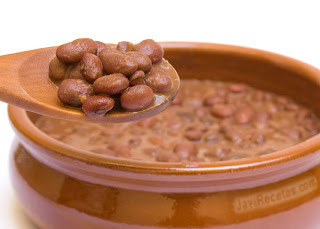
4 Cups pinto beans
1 or 2 Tablespoons Baking soda
1 onion
1 Tablespoon salt
Wash beans thoroughly by placing beans in a colander in the sink and running water over it while washing the beans by hand, rinsing through several times, making sure they are completely clean. Soak beans in tall stockpot overnight with baking soda.(It is said that the soda removes some of the gas.) Make sure water covers beans allowing them to still be covered with water after doubling in size during soaking process. In the morning, drain into colander and rinse thoroughly. Pour beans into pot. Add chopped onion, salt, and cover with water. Bring to a boil and simmer until soft, 1 or 2 hours. Traditionally, beans are mashed and fried in lard, but I don’t fry them. Using a slotted metal spoon to move beans into a medium hot saucepan, a few spoonfuls at a time, mash with the slotted spoon and add bean broth so the beans do not dry out. Continue until all beans are added. Use the broth to get the right consistency. You may not use all the broth, but save the broth for re-heating any leftover beans.
GALLO PINTO (Black bean flavored rice)
Country of origin: Costa Rica & Nicaragua
Oil — 2-3 tablespoons
Onion, finely chopped — 1
Bell pepper, finely chopped — 1
Garlic, minced — 2-3 cloves
Cooked red (kidney) beans, drained, liquid reserved — 2 cups
Salt and pepper — to taste
Hot cooked rice — 2 cups
Heat the oil in a large skillet or sauté pan over medium-high flame. Add the onions, bell pepper and garlic and sauté for about 2-3 minutes, or until cooked through. Stir in the drained beans, some of their reserved liquid, salt and pepper. Bring to a boil, then reduce heat to medium-low and continue to simmer until heated through. Add the rice and stir into the beans and heat through. Adjust seasoning and add a little more bean liquid if necessary. Depending on your taste, you may want to add more seasoning vegetables and vary the amount of each one. Serve hot. It’s usually served with tortillas on the side and maybe some local cheese.
Variations
Casamiento (Salvadoran black beans and rice): Use black beans instead of red beans.
Nicaraguans on the Caribbean coast use coconut oil instead of regular vegetable oil.
Stir in some chopped cilantro.
Add a few dashes of bottled pepper sauce or Worcerstershire sauce for added flavor.
GARLIC SOUP (Sopa de Ajo)
Country of origin: Cuba
courtesy of Cocina Cubana Club / Pascual Perez and chef Sonia Martinez http://www.tasteofcuba.com/garlicsoup.html
Serves 4-6 people
Half a head of garlic, each clove peeled and mashed
1/2 a large yellow onion, sliced thin
1/4 lb butter
6 cups of chicken or beef broth (I prefer the chicken for this)
Salt and freshly ground white peppercorns to taste
1 piece of bread, toasted, per person- can be cubed
1 raw egg per person (* optional)
In a large saucepan, saute the mashed garlic and sliced onion slowly in the butter. Don’t let the garlic turn brown and bitter.
Place a piece of toast (or cubes) in each bowl and break an egg over it. Ladle the soup over the egg and toast.
GORGONZOLA-WALNUT SAUCE (cheese sauce for Ñoquis)
country of origin: Argentina
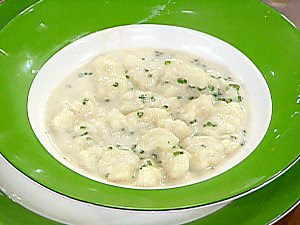
1/2 tablespoon Butter
1 medium Shallot diced finely
1 8 oz package Gorgonzola cheese crumbled
½ cup heavy cream
2/3 cup walnuts unsalted, coarsely chopped
In a small saucepan, heat butter over medium heat and add diced shallots until softened, about 1-2 minutes. Lower heat to low and add gorgonzola cheese, stirring as it melts. Add cream. Keep heat on low, but gradually raise it to medium, stirring, taking care not to curdle or boil the sauce. Stir in walnuts.
JUSTINA BAZA’S FISH RECIPE
Country of origin: Mexico (indigenous recipe)
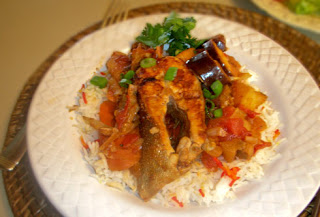
2 Tablespoons butter
½ onion
2 celery stalks
½ tsp. garlic powder
red cayenne pepper
1 tomato
1 Tbl. hot salsa
Pacific red snapper
Sauté onion and celery in butter. Stir in spices. Cook fish on top 15-20 minutes on low, covered. Serve with mixture spooned on top.
LIQUADO de PLATANO (banana smoothie)
Country of origin: Mexico
1 banana
4 cups milk
1 cup yogurt
dash cinnamon
Combine ingredients in blender. Blend until smooth and frothy. Alternatives: add strawberries, different flavored yogurts, or any fruit.
LLAPINGACHOS (Potato Cakes)
Country of origin: Ecuador
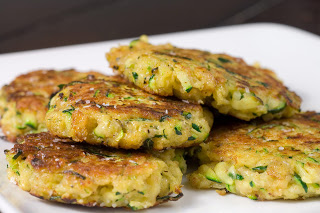
5 large Russet potatoes, peeled and cut in chunks
2 tbs sunflower oil
½ cup finely chopped white onion
2 tsp ground achiote
1 cup grated Mozzarella or Fontina cheese
Salt to taste
DIRECTIONS: Boil the potatoes until soft
Heat the oil over medium high heat to make a refrito, add the onions and achiote, cook until the onions are soft, about 5 minutes. Mash the potatoes, mix in the onion refrito and salt to taste. Cover the potato dough and let it sit at room temperature for about an hour. Make small golf size balls with the potato dough. Make a hole in the middle of each ball and fill with the grated or crumbled cheese. Shape the dough into thick patties and let rest in the refrigerator for about ½ to 1 hour.
Cook the patties on a hot griddle until browned on each side, be careful when turning them as they will be very delicate.
NOTES: Llapingachos are an Ecuadorian dish of potato patties or thick pancakes stuffed with cheese and cooked on a hot griddle until crispy brown. Llapingachos are typically served as a side dish for many Ecuadorian main courses; however llapingachos also make a great breakfast or brunch dish, and can be served on their own as an appetizer or even as a full meal accompanied by a tasty peanut sauce, fried egg, sausage, pickled onion and tomato salad, some lettuce, avocado slices and hot sauce. I recommend using Russet potatoes or a potato that is very starchy. Next, let the potato mixture rest for at least an hour before making the patties, when preparing the patties and filling them with cheese make sure the cheese is stuffed well enough to keep it from seeping through to the surface and burning during the cooking process, and once the patties are formed, let them also rest for at least 30 minutes. Finally, when cooking the llapingachos, avoid using any oil or grease, this will help prevent them from breaking up, and also it helps to use a griddle, but regardless of whether you use a griddle or a frying pan make sure it is well heated, and kind of like making that first pancake you can assess how hot and how long the llapingachos needs to cook on each side to have that nice crispy brown finish; I used to turn them several times back and forth, but if you let them cook long enough on each side and just turn them once the results are much better, and since the patties are pretty delicate you have to be careful when turning them.
VARIATIONS: The achiote powder gives the patties an orange color. If you don’t have achiote, add a teaspoon or two of paprika. Or just leave it out altogether.
Ecuadorans typically use a young white cheese called queso blanco for stuffing llapingachos, but you can use Monterey jack or mozzarella.
Use finely minced white onion instead of scallions.
Mix the cheese and scallions in with the potatoes instead of stuffing them.
Add a little cayenne pepper or hot pepper sauce to the to the peanut sauce if you’d like some heat. Or add a little ground cumin for extra flavor. Serve with a fried egg, peanut sauce, tomato and onion curtido, avocado slices and hot sauce.
LOCRO (Potato Soup)
Country of origin: Ecuador
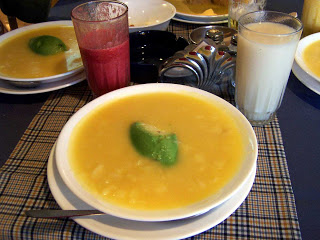
4 tablespoons (1/4 cup) butter
1 teaspoon sweet paprika
1 medium onion, finely chopped
4 pounds potatoes, peeled and sliced
1 cup each milk and light cream
1/2 pound Munster cheese, grated (can use American cheese)
salt
In a large, heavy saucepan heat the butter and stir in the paprika. Add the onion and saute over moderate heat until the onion is softened. Pour in 4 cups water, bring to a boil, and the potatoes, and simmer over low heat, uncovered, stirring occasionally. When the potatoes are almost done, add the milk and cream and continue to cook, stirring from time to time, until the potatoes begin to disintegrate. Stir the cheese into the potatoes, season to taste with salt, and serve immediately. Avocado slices are sometimes served with the Locro, on separate plates but to be eaten at the same time.
LOMO EN JUGO DE NARANJA (Pork Loin in Orange Juice)
Country of origin: Ecuador
3 tablespoon butter
1 large onion, finely chopped
1 clove garlic, minced
3-pound loin of pork, boned
salt, freshly ground pepper
1 tablespoon grated orange rind
1 fresh hot red or green pepper, seeded and ground,
or 1 teaspoon hot pepper sauce such as Tabasco
2 cups orange juice chicken stock
2 teaspoons cornstarch
Heat the butter in a skillet and saute the onion and garlic until the onion is soft. With a slotted spoon transfer the onion and garlic to a flameproof casserole large enough to hold the pork loin. Season the pork with salt and pepper and brown all over in the fat remaining in the skillet. Add the pork to the casserole with the grated orange rind, the hot pepper or hot pepper sauce, orange juice, and enough stock barely to cover. Bring to a bare simmer and cook, covered, over very low heat for about 2 hours, or until the meat is tender. Put the meat on a serving platter, slice it, and keep it warm. Measure the liquid in the casserole and reduce it over brisk heat to 2 cups. Mix the cornstarch with a little water and stir it into the sauce. Cook, stirring, over moderate heat until the sauce is lightly thickened. Spoon a little of the sauce over the pork and serve the rest separately in a sauceboat. Accompany the pork with a salad made of cooked sliced beets, carrots, and potatoes in a vinaigrette sauce made with a teaspoon of Dijon mustard. If liked, toss the vegetables separately in the vinaigrette sauce and arrange them in heaps on a bed of lettuce leaves on a platter. Or serve with plain rice and green vegetable.
MASHED POTATOES
Country of origin: Peru – “the potato capital of the world”
6 potatoes
1 teaspoon salt
½ cup butter or margarine
½ cup sour cream
½ cup milk
Clean and peel potatoes. Dice into quarters or eighths and place in boiling water for about 15 to 20 minutes, until to soft enough to pierce with a fork. Drain water. Add salt, butter, and sour cream. Mash with potato masher, mixing in the ingredients. Slowly add milk you may need more or less milk, stirring constantly until you achieve the desire consistency.
ÑOQUIS (gnocchi)
Country of origin: Argentina

6 potatoes (one for each person)
¼ cup butter
pinch of salt and pepper (to taste)
1 egg (whisked) per 6 potatoes
½ teaspoon garlic powder
2 cups flour (1/3 cup for each potato)
Peel and quarter the potatoes, putting them in a medium stock pot with enough water to cover the potatoes with one inch of water. Add a scant handful of salt. Put the potatoes to boil until they are tender when pierced with a fork , but not mushy. Drain the potatoes.
Mash potatoes. In a large bowl, combine the potatoes, eggs, and mix well using your hands or a fork until a consistent dough is formed. Be careful not to overmix.
Add the flour a half cup at a time, mixing each time by hand until there is a soft, pliable dough. The dough should not be sticky, and it should not be hard. If it’s too sticky or soft, the gnocchi will be mushy, but if there’s too much flour, the gnocchi will be chewy and tough. (This is the challenging part!)
Knead the dough a few times until uniform, and divide the dough in half . Flour a work area, and roll the dough out into a long thin roll about 3/4 inch thick. Cut these tubes of dough into sections about 1 inch long. Meanwhile, bring a stock pot of water to a boil.
There are a variety of ways to ‘mark’ the gnocchi-all just a style choice, since at this point, they are more or less done. Here are some suggestions: Mark an indentation in the center of each gnocchi with your index finger; or roll over the side of a cheese grater to make patterned indentations; or roll over the backside of a fork, or roll over the center of a wooden gnocchi tool.
At this point, the gnocchi can be frozen laid out on a baking sheet lined with wax paper. After they are frozen, they can be stored in a freezer bag. Frozen gnocchi are just put into the boiling water like the unfrozen ones.
Drop approximately 10 – 15 gnocchi, one at a time, into the boiling water. (like dumplings)They are cooked when they rise to the top. Collect with a slotted spoon and transfer to a plate. Serve with the sauce of your choice. (Some nice choices are walnut Gorgonzola, tomato or white sauce.)
PAN DE MUERTO (sweet anise bread)
country of origin: Mexico (used in celebrations of All Souls Day/ Dia del los muertos 1 and 2 of November)
1 Cup milk
1/3 Cup butter
1/3 Cup sugar
1 teaspoon anise extract
1/2 teaspoon salt
2 1/2 Cups flour
1 package dry yeast
3 eggs
2 1/2 Cups flour
1 egg
sugar
Heat milk and add butter, sugar, anise, and salt, just until butter melts. Remove from heat. Mix flour with yeast and pour milk mixture over. Add eggs. Beat with electric mixer for 30 seconds. Scrape. Beat on high for 3 minutes. Stir in 2 1/2 Cups flour with wooden spoon. Knead and tun in greased bowl. Cover and let rise 1 hour until double. Punch down. Divide dough in half. Form each into shape of a skull, using a closed fist to press in eye sockets and teeth. Place on cookie sheet. Beat an egg and brush surface of bread with egg to make a shiny coating. Sprinkle with colored or plain white sugar. Bake at 350 for about 25-30 minutes or until toothpick comes out clean. Bread should be decorated with sugar and frosting. Traditionally, a name is written on the forehead with frosting. Note: this recipe works well for cinnamon rolls, but omit the anise.
PAN DE MUERTO II (another recipe)
Country of origin: Mexico
4 cups water
1/4 cup yeast
4 teaspoons salt
1/4 cup oil
1 teaspoon anise extract
1/2 cup sugar
10 cups flour
Dissolve yeast in 1 cup lukewarm water. Add sugar. In bowl, mix remaining water, salt, and oil. Then pour in dissolved yeast. Add 9 cups of flour, one cup at a time. Mix well until soft, not sticky. Do not use the mixer anymore, as you add last cup of flour, slowly and only if necessary. Knead well. Let rest 20 minutes, covered. Beat with fist for 2 minutes. Grab a large handful of dough and place in a separate bowl that has sugar sprinkled in the bottom. Lightly knead the dough over the sugar and then place on a well greased pan. Shape into skull-shape. Let rise for 30 minutes or until double. Press dough with closed fist to form eye sockets and teeth. Should be able to create 6 large skulls (about 8 or 9 inches long). 2 fit on a regular cookie sheet. I have small pans and can fit all 6 in my oven. Bake for 30 minutes at 325 degrees. Let cool and then decorate with frosting. Traditionally, names are written on the forehead with frosting. Note: This recipe could be used to make good dinner or cinnamon rolls, but omit the anise.
PATACONES (refried plantains)
country of origin: Ecuador
unripened plantain (verde)
lard for frying
Cut plaintains at a 90° angle, 1″ thick. Fry in lard. Remove and hit them with a stone so that they are smashed flat, (that’s why some people call it patacón pisao or stepped-on patacón). Then fry them again. Chifles is another plantain dish. Slice thin, like potato chips, and fry.
PICADILLO (goulash)
country of origin: Mexico
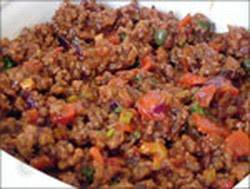
6 potatoes
1 pound ground beef
1/2 medium onion
1 bell pepper, sliced
1/2 teaspoon salt
1 teaspoon chili powder
1/2 teaspoon garlic powder
8 oz. tomato sauce
Slice potatoes into cubes and place in boiling water. Meanwhile, brown ground beef, do not drain, Add chopped onion, bell pepper, and spices. Drain potatoes and combine with beef mixture. Stir in tomato sauce and cover until heated through. May be served topped with cheese and eaten with tortillas. There are various versions of this dish, as it is a dish used to present a dinner with left overs. So any fresh vegetables or meat may be added to recipe.
PICADILLO goulash
from the kitchen of Connie Bazzarre, my co-worker at Stellar Charter School
country of origin: Cuba
2 lbs ground beef
1 Tbsp. olive oil
1 1/2 cup thinly sliced onion
1 garlic clove, minced
1 1/2 cups chopped or sliced yellow bell pepper
1 1/2 cups chopped or sliced red bell pepper
1 cup finely chopped carrot
1/2 cup golden raisins
1/2 cup sliced pimento-stuffed manzanilla or green olives (about 15 olives)
2 Tbsp. balsamic vinegar
1 1/2 tsp. salt
1/8 tsp. black pepper
1 pinch cumin
2 bay leaves
1 (14.5 oz) can stewed tomatoes, undrained
1 (8 oz.) can tomato sauce
Cook beef in a large nonstick skillet over medium high heat until browned
stir to crumble. Remove from pan. Drain well.
Saute onion and garlic in oil for 3 minutes. Add bell peppers and carrot. Saute another 3 minutes. Return beef to pan and stir in remaining ingredients. Bring to boil. Reduce heat; simmer for 15 minutes, stirring occasionally. Discard bay leaves.
Serve over white rice, if desires. Should serve 6.
PICO DE GALLO (fresh cut salsa)
Country of origin: Mexico
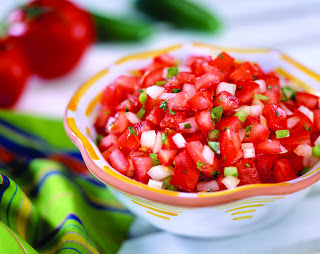
10 tomatoes
1/2 bunch of cilantro
1 yellow onion
1 cucumber
1 jalapeño
10 slices of carrots pickled with jalapeños.
1 Tablespoon lemon juice
1 teaspoon garlic powder
1/4 teaspoon salt
Dice all vegetables and cilantro, pour lemon juice over them and mix. Stir in finely chopped cilantro and spices. Cover and refrigerate at least over night, preferably several days to allow the flavors to absorb.
POZOLE
Country of origin: Mexico (Christmas Eve hominy soup)
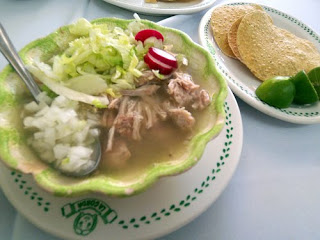
2 lbs pork stew meat
1 Tbl. garlic powder
1 1/2 teaspoon salt
4 cups water
1 whole onion
30 oz. hominy
radishes
green onion
cabbage
oregano
lemon slices
dried, crushed red chili peppers
Cut meat into smaller pieces. Brown meat in pan, sprinkling generously with garlic powder. Cover with water and salt. Bring to boil. Add hominy (do not drain) and whole onion and simmer until ready to serve. Remove onion before serving. May put in crock pot all day. Individuals garnish bowls of soup with thinly sliced radishes, cabbage and green onion. Make oregano and chili available to sprinkle on soup, as well as lemon slices.
PUCHERO (Uruguayan meat stew)
Country of origin: Uruguay
• water
• 4 pounds osso buco (veal shanks), cut into six pieces
• 6 carrots, peeled
• 1 onion
• 1 pound green beans
• 6 ears of sweet corn, husked
• 1 squash (medium size), cut into 6 pieces, unpeeled
• 1 cup chopped celery 6 white potatoes, peeled
• 6 zucchini
• 1 bunch parsley
• 4 teaspoons salt
Fill a large saucepan with water and bring it to a boil. Add all ingredients to boiling water in the following order: the meat, then carrots, onion, green beans, corn, squash, and celery. Then add potatoes, zucchini, and corn. Add parsley and salt to season the stew. Cover and simmer for 30 minutes, or until potatoes are tender. Drain off most of the liquid. Serve the meat and vegetable in bowls with a little of the broth. Mustard, mayonnaise, tomato, onion, or pepper sauce may be served as
accompaniments. Recipe courtesy of the Embassy of Uruguay.
PUPUSAS
(country of origin: El Salvador)
2 cups Masa harina
1 cup Warm water
1 cup Filling (see variations)
In a large bowl, mix together the masa harina and water and knead well. Knead in more water, one tablespoonful at a time if needed, to make a moist, yet firm dough. (It should not crack at the edges when you press down on it.) Cover and set aside to rest for 5 to 10 minutes. Roll the dough into a log and cut it into 8 equal portions. Roll each portion into a ball. Press an indentation in each ball with your thumb. Put about 1 tablespoon of desired filling into each indentation and fold the dough over to completely enclose it. Press the ball out with your palms to form a disc, taking care that that the filling doesn’t spill out. Line a tortilla press with plastic and press out each ball to about 5-6 inches wide and about 1/4-inch thick. If you don’t have a tortilla press, place the dough between two pieces of plastic wrap or wax paper and roll it out with a rolling pin. Heat an ungreased skillet over medium-high flame. Cook each pupusa for about 1-2 minutes on each side, until lightly browned and blistered. Remove to a plate and hold warm until all pupusas are done. Serve with curtido and salsa roja. Makes 4-5 pupusas
Variations
Pupusas de Queso: With a cheese filling. Use grated quesillo, queso fresco, farmer’s cheese, mozzarella, Swiss cheese or a combination. Add some minced green chile if you like.
Pupusas de Chicharrones: With a filling of fried chopped pork and a little tomato sauce. A reasonable facsimile can be made by pulsing 1 cup of cooked bacon with a little bit of tomato sauce in a food processor.
Pupusas de Frijoles Refritos: With a refried bean filling.
Pupusas Revueltas: Use a mixture of chicharrones, cheese and refried beans.
Pupusas de Queso y Loroco: With a cheese and tropical vine flower filling. Loroco can be found in jars at many Latin markets.
Pupusas de Arroz: A variety of pupusa that uses rice flour instead of corn masa.
Cooked potatoes or finely minced, sautéed jalapeño peppers are also tasty fillings. Try a mixture of different fillings.
QUESADILLAS (cheese-filled tortillas)
country of origin: Mexico

Cheese
Tortillas
Use grated or very thinly sliced cheese (Cheddar, Monterey Jack)
Place cheese on half of the tortilla and fold over and place on skillet using medium high heat. Turn over once until cheese melts.
SALSA DE MANI (Peanut Sauce)
1 large onion, thinly sliced
2 cups whole milk
1/2 cup natural, unsweetened peanut butter
salt and pepper to taste
1 teaspoon paprika
Preparation:
Place the sliced onion and the milk in a pot. Bring milk to a simmer, and simmer gently, covered, for 10 to 15 minutes, to infuse the milk with the flavor of the onion.
Remove from heat and strain to remove onion. Return milk to pot and stir in the peanut butter. Bring to boil and cook, stirring, until mixture thickens, about 3 minutes.
Remove from heat and cool. Season with salt and pepper to taste. Season with hot pepper oil if desired.
SECO DE CHANCHO (Pork Stew)
Country of origin: Ecuador

2 tablespoons annatto oil or lard
3 pounds lean pork shoulder, cut into 2-inch cubes
1 large onion, finely chopped
2 large cloves garlic, minced
1 large tomato, peeled, seeded, and chopped
1 red bell pepper, seeded and coarsely chopped, or
2 canned pimientos, chopped
1 fresh hot red or green pepper, seeded and finely chopped
1 tablespoon fresh coriander (cilantro), chopped coarsely
1/2 teaspoon ground cumin
1/2 teaspoon oregano
salt,
freshly ground pepper
pinch sugar (optional)
2 cups beer
Heat the oil or lard in a heavy skillet and lightly saute the pork cubes. With a slotted spoon remove the pork pieces to a heavy flameproof casserole. Remove all but 2 tablespoons of fat from skillet, add the onion and garlic, and saute the mixture until the onion is soft. Add the tomato, the sweet and hot peppers, coriander, cumin, and oregano, and simmer until the mixture is well blended, about 10 minutes. Season to taste with salt and pepper and, if liked, the pinch of sugar. Pour over the pork, add the beer, cover, and cook over very low heat until the pork is tender, about 2 hours. The sauce should be quite thick. If it seems at all watery, partially uncover the casserole during the second hour of cooking. Serve with rice.
SO’O-IOSOPY (Pounded Beef Soup)
Country of origin: Paraguay
2 Tablespoons rice
1 Tablespoon oil
1 lb. ground beef
salt to taste
oregano
parsley
5 cups water
1 medium onion, chopped
1 green pepper
1 tomato
3 green onions
Fry rice in oil. Set aside. Cook ground beef. Drain fat. Add chopped onion and spices to your taste; cook 3 minutes. Add water and other ingredients. Cook 30 minutes, or until all ingredients are soft. The cooked soup could be put in a blender before serving. So’o’isopy is not in Spanish. It’s is from the aboriginal language: Guaraní. So’o’isopy means soo’o’meat and iosopy derived from sopyre (of international origin) means pounded. Popularly called Soyo, it is a thick soup of mean pounded in mortar.
SOPA DE ALBONDIGAS (meatball soup)
Country of origin: Mexico
1 Tablespoon olive oil
1 medium onion, chopped
1 clove garlic, minced
2 peeled potatoes, diced
2 medium carrots, sliced
1 or 2 zucchini, sliced
4 cups water
2 cups beef broth
6 oz. tomato paste
1 can corn, undrained
fresh avocado
For meatballs (albondigas)
1 beaten egg
1/2 cup uncooked, dry oatmeal
1/4 cup snipped cilantro
1 teaspoon salt
1/2 teaspoon dried oregano, crushed
1/8 teaspoon pepper
1 lb. ground beef
Saute onions in oil, add garlic and potatoes. Brown potatoes. Toss in carrots and zucchini. Add water, broth, and tomato sauce. Stir and add the can of corn. Cover and allow to simmer or transfer to a crock pot.
Mix all ingredients for meatballs and form into 1 inch balls. Fry on saucepan. I like mine very, very well done. Drain grease. Spoon them into the soup in the crock pot. Ready to serve or you can keep it in the crock pot until everyone is ready to eat. Garnish each bowl with fresh avocado slices. My husband likes to add crushed, dried red pepper, however, traditionally, it is not a spicy soup.
SOPA DE MANI (Peanut Soup)
Country of origin: Ecuador
2 tablespoons butter
1 medium onion, finely chopped
1 cup toasted peanuts, finely ground
1 pound fresh potatoes, cooked and chopped
4 cups chicken or beef stock 1 cup light cream
salt,
freshly ground pepper
2 tablespoons chopped chives
Heat the butter in a skillet and saute the onion until it is soft. In a blender or food processor combine the onion and any butter in the skillet, the peanuts, potatoes, and a little of the stock. Blend to a smooth puree, pour into a saucepan, stir in the rest of the stock, and simmer gently, covered, for 15 minutes. Stir in the cream, season to taste with salt and pepper, and simmer just long enough to heat through. Pour into soup bowls and garnish with the chopped chives.
SOPA DE CHILE VERDE
Country of origin: Mexico
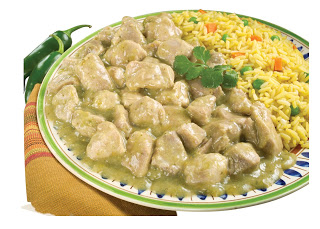
2 lbs. pork stew meat
2 Tbl. garlic powder
4 cups water
1 chopped onion
1 ½ teaspoon salt
15 oz sour cream
8 oz cream cheese
2 jalapeños chopped
20 oz green chiles
Cut meat into smaller pieces. Brown meat in pan, sprinkling generously with garlic powder. Stir in onions. Cover with water and salt. Bring to boil. Remove from heat and incorporate cream and cheese. Dice and add jalapeños and green chiles. May keep in crock pot. May add 16 oz green beans. Serve with flour tortillas, or Sky High biscuits or over rice. Warning: very spicy!
SOPA DE FIDEOS (Chicken Vermicelli Soup)
Country of origin: Mexico
2 tablespoons olive oil
2 ounces spaghetti, vermicelli, or other thin noodle, broken into 2-inch
pieces
1 can (15-oz size) tomatoes with their liquid
1 onion, chopped
4 cloves garlic, chopped
6 cups beef or chicken stock
Salt and freshly ground pepper to taste
Heat the oil in a large pot over high heat and saute the broken noodles until lightly browned. Meanwhile, combine the tomatoes, onion, and garlic in an electric blender or food processor and puree until smooth. Pour the tomato mixture into the pot with the noodles and cook for 5 minutes, stirring frequently. Add the stock and simmer covered until the noodles are tender, 5 to 10 minutes. Adjust the seasoning with salt and pepper.
SOPA NEGRA (Black Bean Soup)
Country of origin: Costa Rica
1 lb black beans. Fresh are best but most likely you’ll find them dried.
8 cups chicken broth or water or a mix
½ teaspoon salt
1 Tablespoon vegetable oil
salt and black pepper to taste
6 eggs
Finely chop 10-12 sprigs cilantro, fresh or frozen, not dried!
1 small or medium onion
2 cloves garlic
1 small green, red, or yellow sweet pepper
If beans are dried, cover with water and soak overnight, if they are fresh, just rise them off. Drain the beans and add water or chicken broth, salt, and half of the chopped ingredients. Bring to a boil. Cover the pan and reduce heat to very low simmer until beans are nearly soft (~ 2½ hours). Add the rest of the chopped ingredients, and vegetable oil, and cook an additional ½ hour. Add eggs for the final 2-4 minutes (depending on how you like your eggs cooked). Remove about half the beans and reserve for gallo pinto or to mash and re-fry (you can leave all the beans in but typically some are removed).
SOPA DE TORTILLA (tortilla soup)
Country of origin: Mexico, Aztec recipe
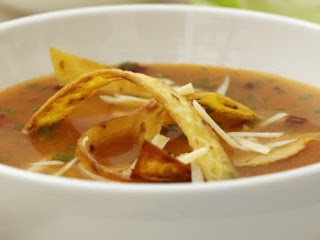
1 lb ground beef
1/2 medium onion
1 tsp garlic powder
1 tsp. salt
1 tsp. cumin
4 cups water
1 (16 oz) can corn
1 (16 oz) can green bean
1 (16 oz) can kidney beans
12 tortillas, cut and fried
avocado
Brown ground beef, mix in diced onion and sprinkle with spices. Stir until onion appears clear. Add 4 cups water, bring to boil. Add vegetables. Simmer for 30 min or more.
Cut up tortillas into strips. Fry in oil.
Place tortilla strips in bottom of bowl and serve soup over tortilla strips.
Garnish with slices of avocado & hot sauce.
SOPES:
Country of origin: Mexico

Beans:
2 Cups pinto beans
1 or 2 Tablespoons Baking soda
1 onion
1 Tablespoon salt
Tortillas:
2 cups Masa Harina
1/4 cup shortening
1/2 tsp salt
1 1/2 cups water
Toppings: (varied
shredded cabbage or lettuce
Shredded cheese
Radishes
Mayonnaise
Sour cream
Inspect beans, removing any rocks or foreign materials. Wash beans thoroughly by placing beans in a colander in the sink and running water over it while washing the beans by hand, rinsing through several times, making sure they are completely clean. Soak beans in tall stockpot overnight with baking soda.(It is said that the soda removes some of the gas.) Make sure water covers beans allowing them to still be covered with water after doubling in size during soaking process. In the morning, drain into colander and rinse thoroughly. Pour beans into pot. Add chopped onion, salt, and cover with water. Bring to a boil and simmer until soft, 1 or 2 hours. Traditionally, beans are mashed and fried in lard, but I don’t fry them. Using a slotted metal spoon to move beans into a medium hot saucepan, a few spoonfuls at a time, mash with the slotted spoon and add bean broth so the beans do not dry out. Continue until all beans are added. Use the broth to get the right consistency. You may not use all the broth, but save the broth for re-heating any leftover beans.
To make tortillas: To make tortillas: Cut shortening into flour until it resembles cornmeal. Stir in salt. Add water 1/8 cup at a time or less to masa until it forms a dry dough. If it is too moist, it will stick and not make tortillas.
Roll into 1-inch balls, flatten by pressing between hands or using a tortilla press. Cook in a skillet using medium high heat. Turn over once to cook opposite side.
Note: various brands of tortilla flour can be found in the Mexican food section of your grocery store.
While tortillas are still warm, squeeze the edges with your fingertips, this should form a rim around the tortillas with a flat center.
Combine lettuce and cabbage after shredding very finely. Grate cheese.
Spread beans in tortilla and sprinkle with cheese. Place on cookie sheet and bake until cheese melts. Top with lettuce mixture and garnish with radishes. Serve warm with a dab of mayonnaise or sour cream.
adapted from
http://www.cooking-mexican-recipes.com/tamales-recipe.html
the other day for forming and steaming. I found it less time consuming to cook
the meat in a crock pot the night before. Then in the morning you are ready to
create the tamales. To make it go even faster, invite friends over for a
“Tamalada,” a tamales making party. Traditionally this is done at
Christmastime. (One is properly referred to as a tamal. [No e.] The plural
is formed by adding the –es.)
The evening before: Trim fat from roast and place in crock pot and cover with
chicken broth. Add the chili powder, cumin, garlic powder, salt, and chocolate.
Set to low and cook until pork is real tender. (Plan for about 12 hours before
you plan to make the tamales. May be done sooner.)
in a bowl of very hot tap water until soft and pliable. Set a heavy item (like
a heavy bowl or mug) on top of the husks to keep them submerged.
crock pot to keep meat warm.
and combine. Add corn oil and mix. Add chicken broth 1/2 cup at a time while
mixing on low setting. You should have the consistency of spreadable cookie
dough. It is very forgiving, so if you add too much liquid, you can add more
masa mix to thicken.
are torn you can use 2 husks and overlap them before putting masa on them. Take
a husk out of bowl and shake off excess water. Notice the husk has a pointy
end, a wide end, and two long sides.
1-2 tablespoons of masa dough evenly on the husk with a spoon or your hands,
creating a thin rectangle shape, approximately 1/4 inch thick leaving a 1 inch
margin around three sides, and 4 inches from the pointy end of the husk without
masa so you can fold it over.
couple of spoonfuls of meat filling down center of the masa dough , leaving at
least one inch of dough around the sides (just enough meat to encase it in masa
and not have it spill out).
the husk in your hands, gently fold your tamal in thirds, so two edges of the
masa meet, sealing the pork between. Continue rolling the remaining husk,
tucking it over. Keep it closed by folding up the pointy end; it should be
almost folded in half. It will get easier with each tamal you make.
tamales upright in a steamer. To prevent the tamales from getting wet, a layer
of extra husks, a small rack, metal colander, a metal lid turned upside down,
pie tin, or tart tin could be placed at the bottom of the steamer. Pots
especially made for steaming tamales are also available. Tamales can each be
tied with string or small pieces of husk, but not necessary. By laying your
steamer on its side or slightly elevated by propping up one side, as you place
each completed tamal on top of the previous, gravity will keep the tamales
closed. As it fills, you can eventually set the steamer upright.
pour in just enough water that the level doesn’t touch the tamales. Cover with
a kitchen towel, and then a lid. Bring to boil and then lower heat. Let
steam/simmer for 1 1/2 hours. Check water often so water doesn’t dry up. Add
water as necessary, but do not let it touch the tamales. Use tongs to check
tamales by removing one, unwrapping. Masa (dough) should be firm and not mushy.
If need be, cook and check every 15 minutes until done.
meat warm), tamales could be steamed in a crock pot.
or Ziploc bags. Freeze according to the serving size for your family, as they
will stick together when frozen. May be reheated in the microwave for 45
seconds and rotated and heated another 45 seconds. Serve with rice and beans.
TILAPIA (marinaded fish and rice)
Country of origin: Costa Rica
3 tablespoons fresh lime juice
3 tablespoons olive oil, divided
4 tablespoons finely chopped fresh cilantro or parsley, divided
4 teaspoons minced garlic, divided
1-1/2 teaspoons kosher salt, divided
1/4 teaspoon Sugar
6 Tilapia fillets, about 5 ounces each
3/4 cup long-grain rice
1 cup chopped onions
2 oranges, peeled, seeded, coarsely chopped
1 can (28 ounces) diced tomatoes, undrained
1 can (15 ounces) black or pinto beans, drained, rinsed
1 teaspoon dried oregano leaves
1/2 teaspoon freshly ground black pepper
1/4 teaspoon cayenne pepper
Tilapia marinade, combine lime juice, 1 tablespoon olive oil, 2 tablespoons cilantro, 1 teaspoon garlic, 1/2 teaspoon salt, and Sugar in a shallow dish.
Add Tilapia and marinate 15 minutes, turning once. To prepare the bean and rice mixture, cook the rice according to package directions and keep warm while the Tilapia is marinating. Preheat oven to 400 degrees. In a large, high-sided skillet or saucepan, heat 2 tablespoons olive oil on medium heat. Add remaining garlic and onions; sauté until translucent, about 5 minutes, stirring. Add 2 tablespoons cilantro, oranges, tomatoes, Beans, oregano, 1 teaspoon salt, pepper, and Cayenne. Cook, uncovered, until hot, 7 to 8 minutes, stirring occasionally. Transfer hot rice to a 9 by 13 inch or 2-1/2 to 3 quart baking dish. Spoon the bean mixture on top of rice and gently blend. Slightly overlap Tilapia fillets on top and scrape marinade over fillets. Bake until the flesh of the Tilapia just begins to flake at the nudge of a fork, 16 to 20 minutes.
TORTILLA DE ESPAÑA (potato tortillas)
country of origin: Spain
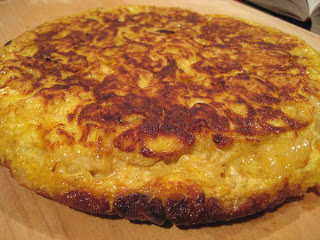
If you like the taste of french fries, you’ll love the Spanish tortilla. When made correctly, it is a delicious half-inch thick “cake” of fried potatoes mixed with fried eggs and onions. After cooking, the tortilla can be cut into pizza-like triangles to serve 4-6 people, or cut into squares to give a whole group a bite-sized toothpick sample.
1 cup olive oil
four large potatoes (peel and dice 2mm thick)
salt to taste
one large onion, thinly sliced
four large eggs.
Some people add thin slices of red pepper together with the onion. Heat the oil in a 9-inch skillet, add potato pieces, one slice at a time so that they don’t stick. Alternate layers of potato and onion. COOK slowly, medium flame. DO NOT FRY!! Turn occasionally until potatoes are tender, but NOT brown. They must be loose, not “in a cake”. Beat eggs in a large bowl with a fork. Salt to taste. Drain potatoes. Add potatoes to beaten eggs, pressing them so that eggs cover them completely. Let sit for 15 minutes. Heat 2 tbsps of the oil in large skillet. Add potato-egg mixture, spreading quickly. Lower the heat to medium-high. Shake pan to prevent sticking (crucial step!!) When potatoes start to brown, put a plate on top skillet and flip to cook other side, adding another tbsp of oil. Brown on the other side. Can flip three or four times for better cooking.
From: http://www.xmission.com/~dderhak/recipe/tortilla.htm
TORTILLAS DE HARINA (flour tortillas)
country of origin: Mexico
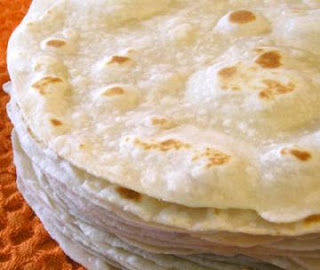
4 cups flour
1/2 teaspoon salt
1 teaspoon baking powder
1/2 cup shortening or margarine
very cold water
Stir salt and baking powder into flour. Cut shortening into flour mixture until it resembles cornmeal. (shortening or lard makes the softest tortillas) Add water 1/8 cup at a time or less until it forms a dry dough. The water must be very cold in order for dough to be easier to work with. Roll into 1 inch balls. Roll out with rolling pin until very flat. Cook in a skillet using medium high heat until tortilla rises forming air pockets. Turn over once to cook opposite side.
TORTILLAS DE MAIZ (corn tortillas)
country of origin: Mexico
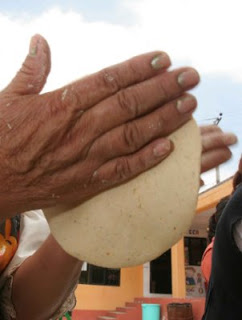
4 Cups masa harina flour(flour for making tortillas or tamales)
1/2 cup shortening or margarine
3 cups water
Cut shortening into flour until it resembles cornmeal. Add water 1/8 cup at a time or less until it forms a dry dough. If it is too moist, it will stick and not make tortillas. Roll into 1 inch balls, flatten by pressing between hands or using a tortilla press. Cook in a skillet using medium high heat. Turn over once to cook opposite side. Note: various brands of tortilla flour can be found in the Mexican food section of your grocery store.


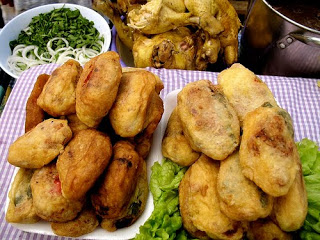

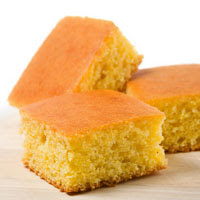
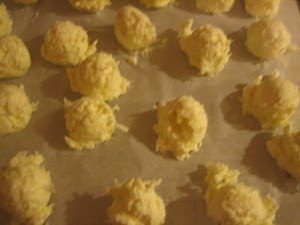
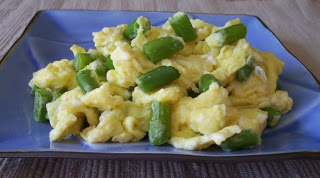
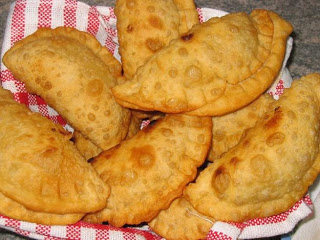
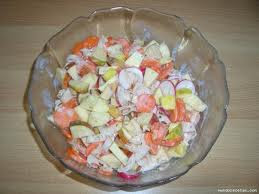
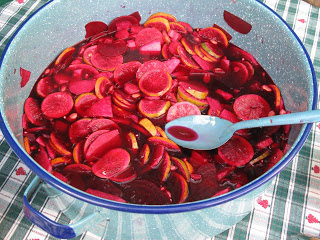
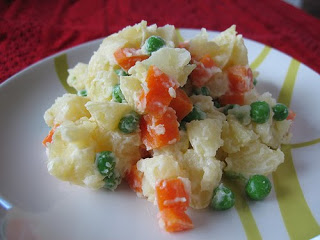

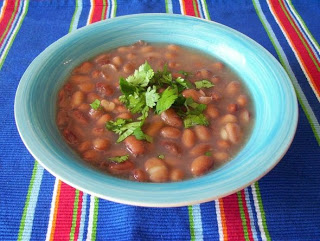
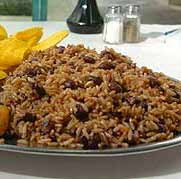
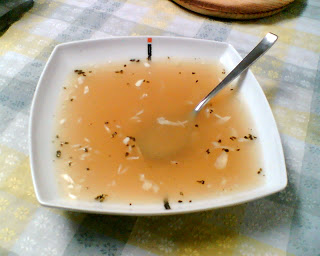

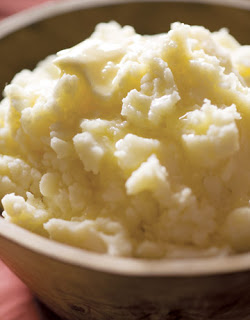

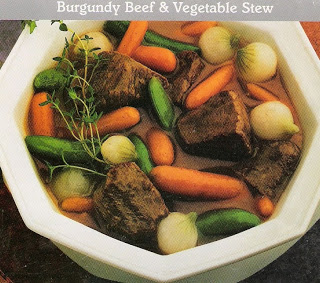
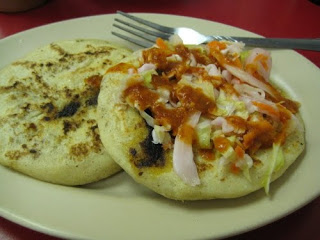
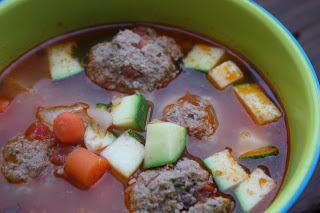



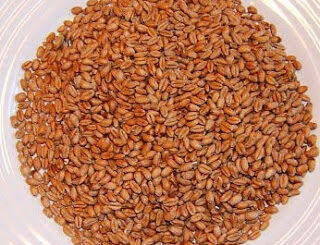
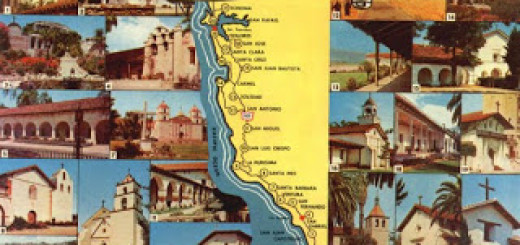
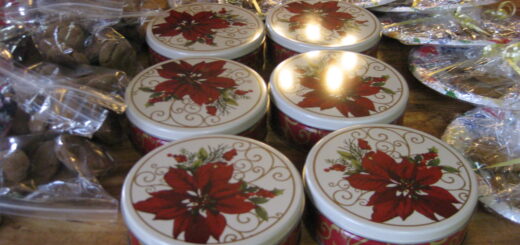
Yo estar tan entusiasmado de encontrar este página web con esas increíble recetas! Me gustó mucho empanadas la receta porque los he tener mucho tiempo en un restaurante de tapas y son muy buenos! Ahora que yo tengo la receta que yo poder tratar de hacer mi propia en la casa ! Parece simple y no mucho ingredientes en ella . Gracias amigo por esta receta !